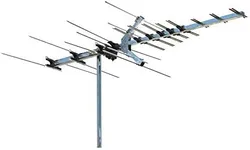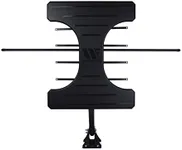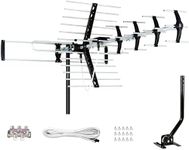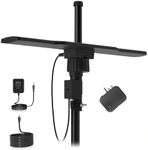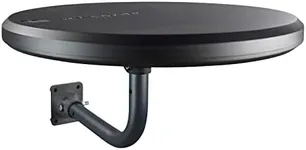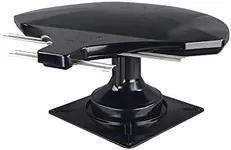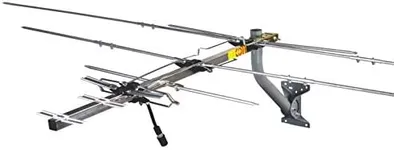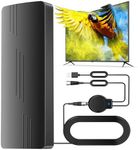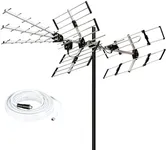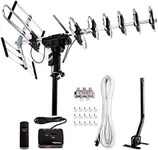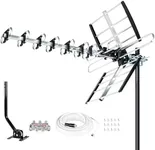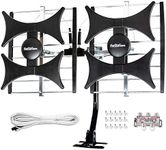Buying Guide for the Best Outdoor TV Antennas
When shopping for an outdoor TV antenna, your main goal is to find one that captures as many channels as possible with consistent quality, based on where you live. Antennas can differ greatly in terms of how far they reach, how many directions they pick up signals from, and how well they stand up to outdoor conditions. To pick the best fit, think about your location, the distance to the nearest broadcast towers, and any obstacles (like tall buildings or hills) that might interfere with signals. It's also important to consider how you plan to mount the antenna and whether you want to set it up for multiple TVs.Range (Reception Distance)Range describes how far an antenna can pick up signals from broadcast towers. This is crucial because if the towers are far away, a stronger or higher-range antenna is necessary for good reception. Ranges are typically specified in miles or kilometers. Short-range antennas (up to 30 miles) are suitable for urban or suburban locations close to towers. Mid-range models (30–60 miles) work for suburbs or semi-rural areas. Long-range antennas (above 60 miles) are intended for rural locations far from broadcast sources. To pick the right range, you should check how far your home is from the nearest TV transmission towers using online tools and choose an antenna that covers that distance.
Directionality (Directional vs. Omnidirectional)Directionality tells you whether the antenna picks up signals best from one direction or from all around. Directional antennas focus on signals from a specific direction and tend to have better range and clarity when pointed at a particular tower, which is best if you know all your channels come from the same area. Omnidirectional antennas receive signals from all directions, useful if channels come from multiple locations or you don't want to aim the antenna precisely. Consider a directional antenna if local towers are grouped together, or omnidirectional if they're spread out.
Frequency Bands Supported (VHF/UHF Compatibility)TV channels are broadcast on different frequency bands, mainly VHF (Very High Frequency) and UHF (Ultra High Frequency). A good outdoor antenna should receive both since channels in your area can be on either band. Some antennas work only with UHF or VHF, while many cover both. It's best to look up what channels are available near you and which bands they use, then make sure your antenna supports those frequencies for broader channel access.
Antenna Size and Mounting OptionsOutdoor antennas vary in size—from compact units to large multi-element arrays. Size can affect performance, especially for long distances, with bigger antennas often being more powerful. However, larger models need sturdy mounting and more space, so check your available area and installation preferences. Also consider if the antenna includes mounting hardware or if you'll need to buy it separately, and whether it can be easily installed on your roof, wall, or attic.
Weather Resistance and DurabilitySince the antenna will be outside, it needs to withstand all kinds of weather. Weather-resistant antennas are built to handle rain, sun, wind, and sometimes snow, with features like UV-resistant plastic, rust-proof metals, and sealed joints. If your area experiences harsh conditions, prioritize durability to avoid frequent replacements.
Amplification (Amplified vs. Non-Amplified)Some antennas have a built-in amplifier to boost weak signals, especially useful if the signal from towers is faint, you have long cables, or there are obstructions. However, amplifiers can sometimes pick up noise along with the signal if you're close to towers. If you’re far from towers or have signal barriers, an amplified antenna may help, but for strong signals or close locations, a non-amplified model is usually sufficient.
Multiple Output SupportIf you plan to connect the antenna to more than one TV, check whether it supports multiple outputs. Some antennas need splitters or built-in multi-TV support for this. Decide based on how many TVs you want to serve and ease of setup.

